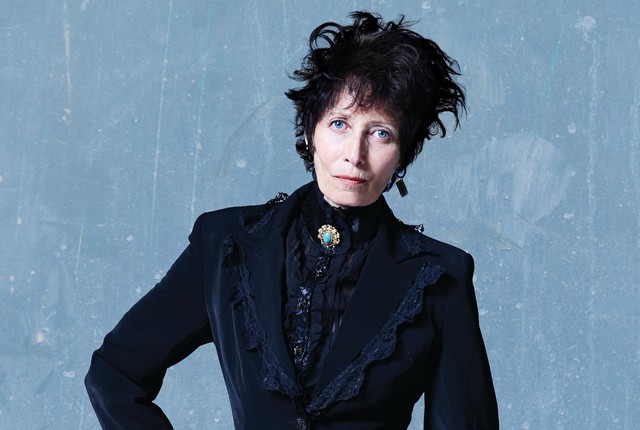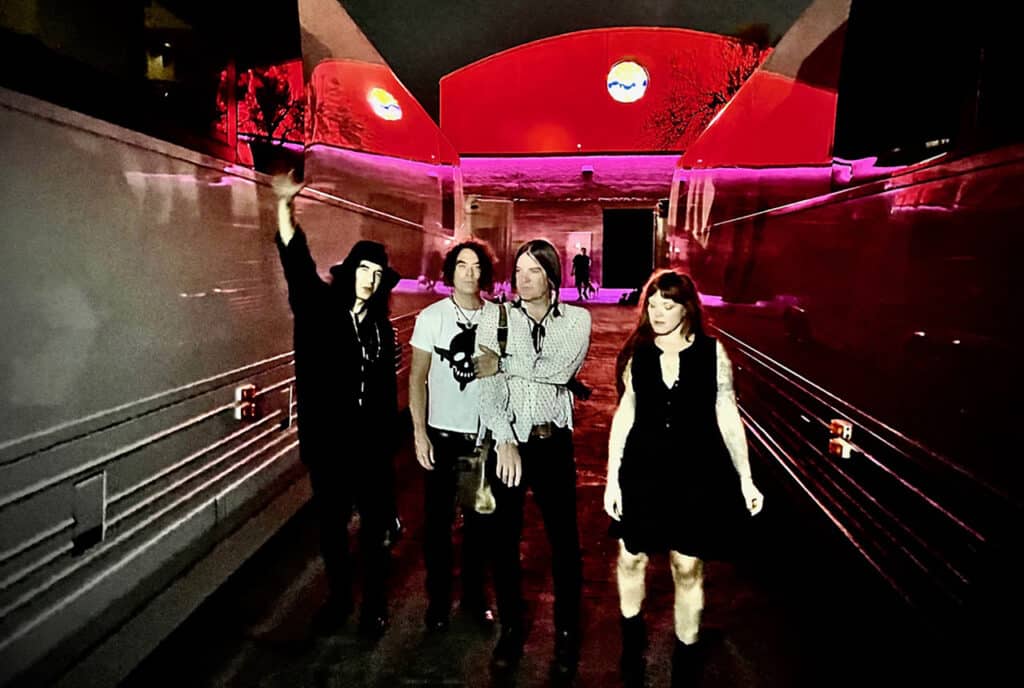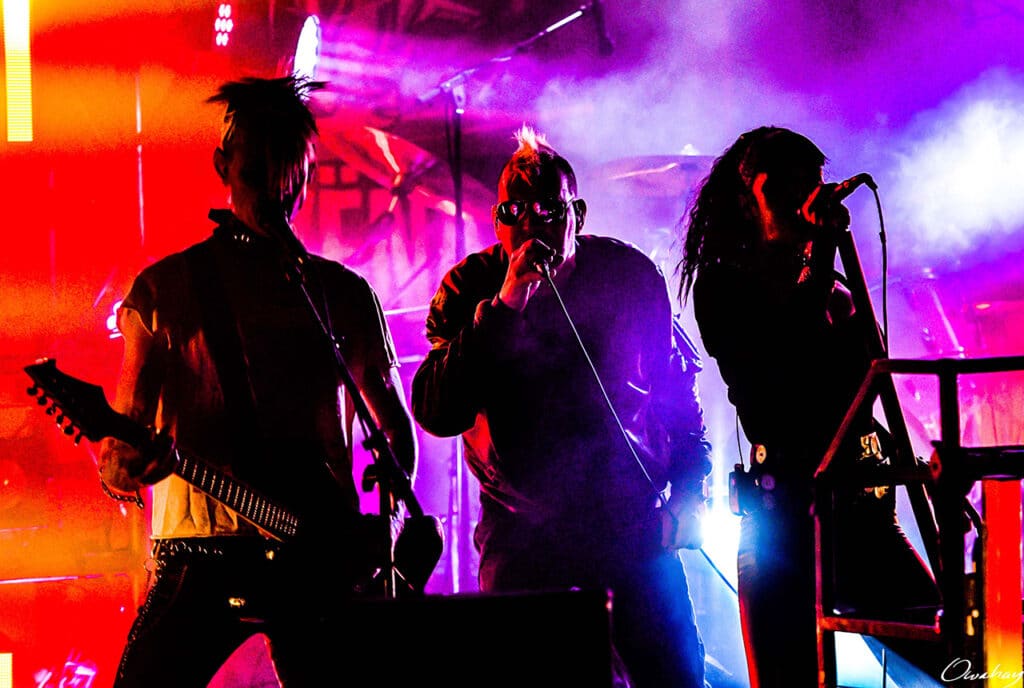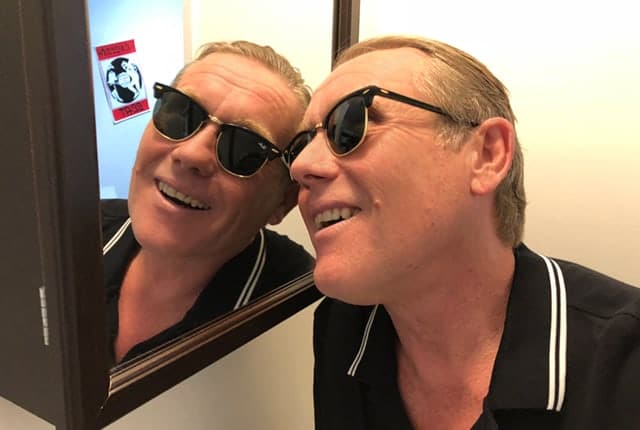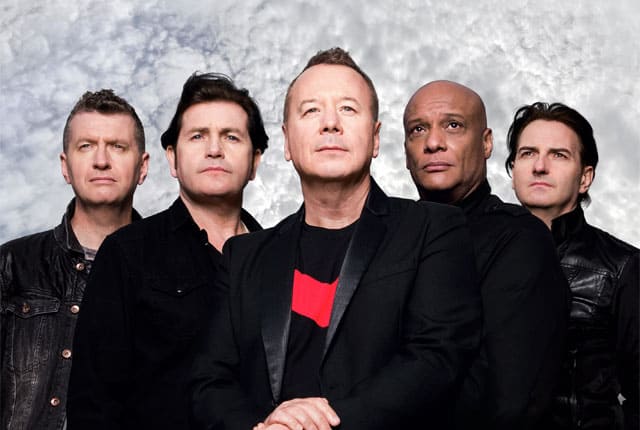For her most recent solo album “Queen Victoria,“ Joy Askew looked to the past to bring a new creative angle to her music. Originally from the north of England, Askew has been based in New York for the past thirty years. One day in 2013 she found herself inspired to incorporate the sound of traditional brass bands into her music. After demoing material with local musicians, Askew traveled to England to work with the famous Brighouse & Rastrick Band. The resulting album is flawless; Askew’s vocals and songwriting are as strong as ever, with the brass instrumentation perfectly blending in and giving the music a unique edge.
Before embarking on her solo career, Askew had built up an impressive resume working with other musicians. She played keyboard and sang as part of Joe Jackson’s band for his “Steppin’ Out”-era “Night and Day” tour and appeared on several of his albums. She went on to sing and play on tours and albums with such artists as Laurie Anderson, Phoebe Snow, Rodney Crowell and Peter Gabriel. Askew also appeared in Laurie Anderson’s movie “Home of the Brave”.
“Queen Victoria” is Askew’s eighth solo album. While she doesn’t have a full brass band to work with in New York, she has been performing this material with a smaller line-up.
Could you discuss the making of your latest album, “Queen Victoria”?
Joy Askew: This album, “Queen Victoria,” began for me in 2013. I have been in New York for a long, long time, but I’m originally from the north of England. Somehow, one day, I just had this incredible memory of hearing a brass band somewhere out on the street. But I couldn’t see them, I could only hear. I might have been quite young. I just remember standing there listening to it. Because of the rise of the Beatles and the Stones and Jimmy Hendrix and Led Zeppelin and The Who, it was so exciting that nobody was interested in the traditional brass band. But at the same time, if you were in the north of England, amongst the coal fields, this is the sound you grew up with. I think the brass bands were started for the coal miners, possibly to strengthen their lungs. It was a horrible job, and they were all incredibly poor as well. This was deep in early Victorian times. They were finding that they were suffering from coal dust in their lungs. I think that someone had the bright idea that if they blew in brass instruments, it would strengthen their lungs. Which it does. If you’re a brass player, you need to have very strong lungs. So, these bands started in the mid-1800s, or even earlier I think. The one I ended up using began in 1867. That was a temperance band. I’d heard of that before. Temperance means they couldn’t drink, so that was another idea. How do we keep them under control? It’s very interesting psychology behind it. But what emerged was a pattern of competitiveness amongst the bands. It’s a beautiful sound and everybody loves it. Somehow, the vibrations of the brass speak deeply into the vibrations of our body and emotions. And it can really stir nostalgic emotions. So that sound spoke to me sometime in 2013. I thought wow, I’ve been here 30 years, and I am very New York and I’m living in Brooklyn and most of my adult life has been here. Certainly, most of my songwriting life has been here. I thought, I wonder what it would be like if I put that brass in my songs? And that’s what led to me making the album.
Was the music written specifically for brass, or did you adapt songs you’d already written?
Joy Askew: It was both. First of all, I had a song that I had written named “Mammoth.” I’d already written it but hadn’t recorded it. I thought of it and felt the brass would really work on that song. I knew it, I could hear it. So, I already had a song. Then I also thought of a song that I had released on my first album, “Tender City,” which is called “I’m still looking for a home.” I thought the brass would really work on that one. And these are both kind of slow-moving songs…. “Mammoth” has got more of a pulse, but the heavy brass and the tubas coming in, that whole sound, I could imagine it. I wrote specifically for the sound. I wrote a song called “1945” and another one called “No Fortune Cookie.” They worked really well. I found brass players, which was very fortunate. I had a regular band with just bass and drums and guitar. The bass player, Rob Jost, is also a French horn player. And occasionally, he would say to me, “You know, Joy, if you want me to play French horn on anything, I’ll do it.” So, once I had this idea, I called him up and told him to come over. He was very excited about it. I think he must have gone a listened to the sound but he kind of knew what I was talking about. British brass bands are very different sounding to American brass bands. So, he said, “Look, I can get you some good players.” He brought in Marcus Rojas on tuba and Steven Bernstein on trumpet, who were very well known in the city and also very well known for being adaptable. They’re unbelievable musicians. So, I had three and I knew a guy named CJ Sanford who was a really good conductor. He was more in the New Music field, writing for a big band, but he also conducted, and he also scored. So, I called him told him that I’d need his help, as it was the first time I was doing something like this. I started to arrange the stuff in my studio. MIDI is a great help because you can get these virtual instruments up. I scored it out a little bit. I went to jazz college in the early 70’s, and I studied big band arranging, which is jazz. It’s different instruments, but I think the concept of arranging is the same. You have to understand the beast of what you’re dealing with and the individual components and then go for it. I was no stranger to actually arranging, but this is a different thing for me. I started doing demos whenever I could afford it, because it was quite expensive. I recorded the demos with these four guys, multitracking because every song had about 12 to 14 parts. That, alone, just to get 5 or 6 songs down, took me 2 years.
How did you come to work with a British brass band for the actual recording?
Joy Askew: I got in touch with The Brighouse & Rastrick Band, who are the most famous, because they had a hit record. I sent them the demo track of “Queen Victoria” and they wrote back and said, “We can absolutely do this.” So that was great. I got to go work with the real thing. They record very quickly. The recording in itself was really the most difficult part. Technology has moved forward to the point that you can do most things that you want to. You can work in digital, and you can work in multitrack at the same time, but the wisest thing is to end up in a digital format, which is accessible to what everybody uses. I knew that I was going to be mixing, which is the most important end result, in ProTools. So, I was looking for compatibility. I could not record live with them; they have a beautiful big band room in the middle of fields and beautiful surroundings in South Yorkshire. It’s specially designed to record well in there, and what they do is bring in a mobile unit and record that way. I ended up feeling that I should use the person that they use because that’s what they are used to. But it was not without incredible problems because none of them had ever had to sync to a track before. They only ever played themselves. I had me on piano and voice, and occasionally there was guitar, and it had to be all in time. They had no experience of working with that, and neither did the engineer. So, there was one horrible moment where I thought it wasn’t going to work at all. It all got sorted out, but it was difficult.
How did you handle the challenges that arose?
Joy Askew: I was fortunate. I actually hired an extra guy because when I heard the sound or The Brighouse & Rastrick Band and I saw all the engineers technical stuff, it was great; he had it all together, but their sound was a little bit too sweet for me. So, I called someone who I’d gotten to know, an interesting front of house engineer who did big live events. He’s a very nice chap and has worked with very famous people. He said, “Look, I’ve got that weekend off and it’s such an interesting project, I’d love to come and do it.” I hired him because I wanted him to persuade the engineer to maybe put the mics in slightly different places, or to influence the production a little bit and say, “It needs to be a more energetic here.” We had discussed this. It was quite complicated, determining if the sound that we heard was because of mic placement, or was it because of the way the played, and we figured it was both. Therefore, mic placement was Colin’s expertise and could make a difference in getting the sound that I wanted. So, fortunately I hired him, and he came with his laptop, fortunately, which happened to have ProTools on it. As we recorded, we noticed that the engineer was using a format that we didn’t know at all. And it wasn’t being recorded and logged in the way that everybody was used to. On any one song, we may have had 20 different takes, or more. And then within those takes, we had all the individual parts. The brass band is 30-piece, so you might have the cornet, the tuba, you’re looking at a hundred different things in one song. If they’re not logged, you don’t know where to find them. Colin’s job changed very quickly from altering mic placement to the minute we did a take transferring it to his computer and putting it into ProTools and logging it.
With the actual recording, the engineer was extremely good. That was partly because originally, he had been a horn player in brass bands, and knew them intimately. There were certain things he could do, production-wise, that we just didn’t know how to do. It was exciting, I think we ended up with a perfect team.
Having demoed the songs, did they change or evolve when you actually recorded with the full brass band?
Joy Askew: Absolutely. There’s no way to do it with four or five players overdubbing. With The Brighouse & Rastrick Band, when you’re playing with a band like that, and in the room when they hit the big moments, it’s just incredible. It actually sets of that emotion inside our body. It’s a vibration. It’s absolutely beautiful. My New York players are marvelous, and I love working with them, but it’s just that we’re talking numbers and volume. They did a marvelous job of multitracking. I used the demos to actually change the arrangements, because then I could really listen to them and say that bit isn’t working, and this bit isn’t working. Or this bit was working but I’d like to enhance it. The demos are the demos and the songs are the songs. And on a couple of them I even changed the vocals totally after the band had played.
What songs were most changed?
Joy Askew: “Mammoth” was the original song I had. I completely changed the vocal on it. And “I’m Still Looking for a Home” and also “Hand-Me-Downs”
Once you’re recording with the brass band, what was the process like bringing the recordings back and finishing the album?
Joy Askew: It had to be so spec’d by the time I got to the recording with the brass band. They only gave me a weekend, four sessions, and one of those sessions was percussion only. To get through the whole album, I had 3 sessions, and they take a lunch, they only do 3 hours at a time. This band usually does it in their own place, or they go down to Abbey Road and in one morning will record a whole program. It’s a different way of looking at things, as we take so long to make a record. There’s no experimentation. At that point, things were set and it was sounding like I’d imagined. Now, as I said, a couple of the tracks I changed the vocal on, which may not be noticeable to other people at first, but to me, it actually changed the emotion of the song. And then, on a couple of the songs, the mixing engineer added a pulse, which was amazing and changed the whole vibe. I did the same thing on “1945.” I went in very late in the game, like the day before it got mixed, and I recorded a kind of pulsing piano that goes off in the distance and again changed the rhythm. I worked with 2 mixing engineers, one guy Paul Evans I worked with in Sweden, and I particularly wanted to use him because he had worked on a lot of records in a company up in Reykjavik, Iceland. I love the sound of a lot of those records, it’s very atmospheric. We were working atmospheric stuff, and the tracks that he did, “Mammoth” and “1945” in particular, that’s the track that ends the record. I really feel like we captured something that had been a lot straighter when it went into the mix and it came out with much-increased vibe. So a lot happens in mixing, if you’ve got a lot of play with. I went to Real World and worked with Patrick in the beautiful big room. He really worked on “No Fortune Cookie” and changed the vibe of that beautifully. We had such a lot to work with. With the brass, we knew it was going to get big, like in “No Fortune Cookie,” it gets really big at one point. We knew it was coming, and then you have emotions to work with. It’s a great way to approach a mix, I think.
What instrumentation do you currently use when you perform this material live?
Joy Askew: Performing live, I use 5. I have 2 trumpets who double on fugal horn, and then French horn, trombone, and tuba.
Has it been a challenge adapting the arrangements for that?
Joy Askew: We’re still working on it. I don’t do a lot of gigs, and I kept thinking that things weren’t working, so I went in and started changing things. To break down 13 or 14 parts into 5 is hard. You’ve got to get the essentials. The first thing the French horn player told me was, “These guys are breathing; you can’t write them all the way through!” You can’t write a part that goes from start to end; they have to have whole sections where they get their breath back. I have to say, though, when I worked with The Brighouse & Rastrick Band, this is the truth. Their lungs are so big they don’t need that breathing space; they can play all the way through. They’re incredible. I came home from England and I told them these guys just blow and they don’t need to take a break. But this is what they do, this is their entire life. A lot of the time they’re playing classical pieces, which are quite demanding. I kind of stepped it up a bit, and everybody’s good with that, because I’ve filled in certain spaces where before they would have taken a break. I’m really enjoying shaping this sound into what it is, the 5-piece as opposed to having a full orchestral sound.
Very recently, I added a Peter Gabriel song, “Don’t Give Up,” and I put what was originally the bass part, actually it’s a chapman stick, I put that part onto tuba and trombone. That arrangement was worked out beautifully. And then I thought I wanted to do “Hey Joe,” slowly, and the trumpet plays the solo. I’m saying get it as close as you can to the feeling of Hendrix’s guitar, so that’s been very interesting. And now Marcus on the tuba is bringing his amp and pedals so he can play kind of an electronic tuba bass. So, we are evolving all the time. We have the brass band stuff and also quite a lot of improvisation as well.
What do you have planned for the future?
Joy Askew: In the projected future, I’m working on making the band more of an installation so we can play in places where we can make it multimedia. I’m in the process getting the first aspects of that together. For the stuff that’s on the album, I’m going over to the north of England to shoot a lot of stuff that will go with a lot of the songs. We’ll have visuals going all of the time and then there will be other stuff that we put into it so that it’s more like an installation. I haven’t presented that yet, but that’s what I’m working on.
For more info on Joy Askew, visit joyaskew.com.
